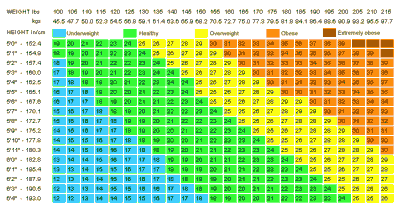On my way back to Denver last week I sat next to a thin young woman who told me that she aimed to gain some weight. We talked throughout the plane ride and she said something to the affect of, “Wow, I didn’t realize everything I knew was wrong. I have so many friends that are skinny just like me.” Really? I forgot about this demographic. You can’t blame me since around 60% of Americans are overweight or obese. Girls typically are wanting to “lose weight” and “get toned” when they get involved in fitness stuff, so you don’t run across too many that are trying to grow.
It’s hard for these women like this to actually grow, even if they are “doing weights”. Assuming they get the advice to lift some kind of weight, that advice is followed by recommendations to move 15 lb. dumbbells around a few times a week. I suppose that’s better than sitting on one’s ass all the time, but it isn’t going to help a skinny girl grow.
The principles are the same: get stronger with compound, full body movements and eat to have an abundance of protein and caloric surplus. Squatting, pressing, benching, and deadlifting are the foundation. Skinny girls owe it to themselves to gain weight for the sake of practicality as well as aesthetics. I’m not a woman, but I would think that a woman would want a curvy figure. Squatting and the related exercises help develop this wonderfully.
There are some problems that a skinny girl will run into. She’ll need help understanding why getting stronger will help, and why eating much much MUCH more protein is necessary. Compound movements that help make you strong cause some natural damage to muscle. This causes a lot of disruption in the body as well as in the relevant muscles used. In order to repair and help that muscle grow, an appropriate amount of protein is necessary along with adequate calories. “Appropriate” and “adequate” are much much MUCH higher than what Skinny Girl has been taught, and these fallacies need to be rectified. The gal I spoke with on the plane probably weighed 95 pounds. If she wants to be 110 pounds, she needs to eat like a 110 pound girl. That means she needs 110 grams of protein. I bet she was getting less than 30 grams before talking to me.
Females in general don’t eat enough protein, so having them plan their meals around their protein is the first step. Getting them past that “conventional wisdom” and “social barrier” of not eating a lot of food is necessary so that they will actually get enough calories to grow and…well…survive better. I wouldn’t place any dietary restrictions on a skinny girl if she was trying to gain weight. If after 5 or 6 weeks there is noticable bodyfat, then we can adjust things. But, I’m telling you, if she eats the minimum protein amount and is squatting three times a week, she won’t have any problem with bodyfat.
It’s actually quite simple, but the fitness and nutrition industries have fucked things up so bad, most women are handicapped before they even start their quest of gaining weight, looking better, and feeling better. I hope that we can help change this silly mindset one Skinny Girl at a time…
———-
I know that was boring for a lot of you dudes, but it’s for the best. Hopefully the following video will entertain you. This was on the Friday before the Raw Nationals meet we went to in Denver a couple weeks ago. We had just gotten our rental car and I only recorded two clips, but they are worth watching. Brent is being his usual pain-in-the-ass self, Chris is exasperated by his behavior, Mike is saying random things that don’t make sense, and I generally don’t acknowledge any of it. Oh, and Chris apparently called shotgun right before I turned the camera on. I like how Chris and Brent are bickering from the get-go.



